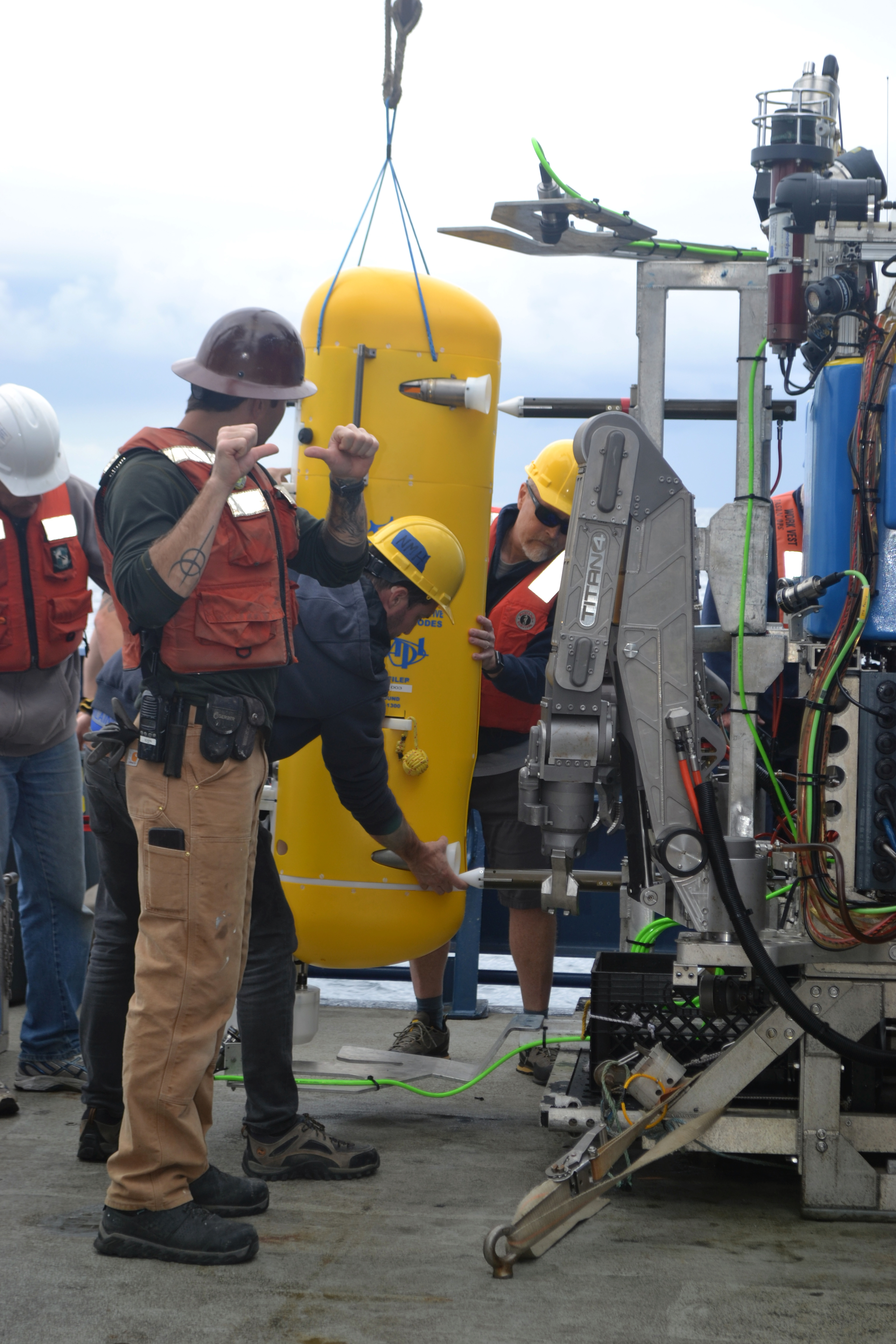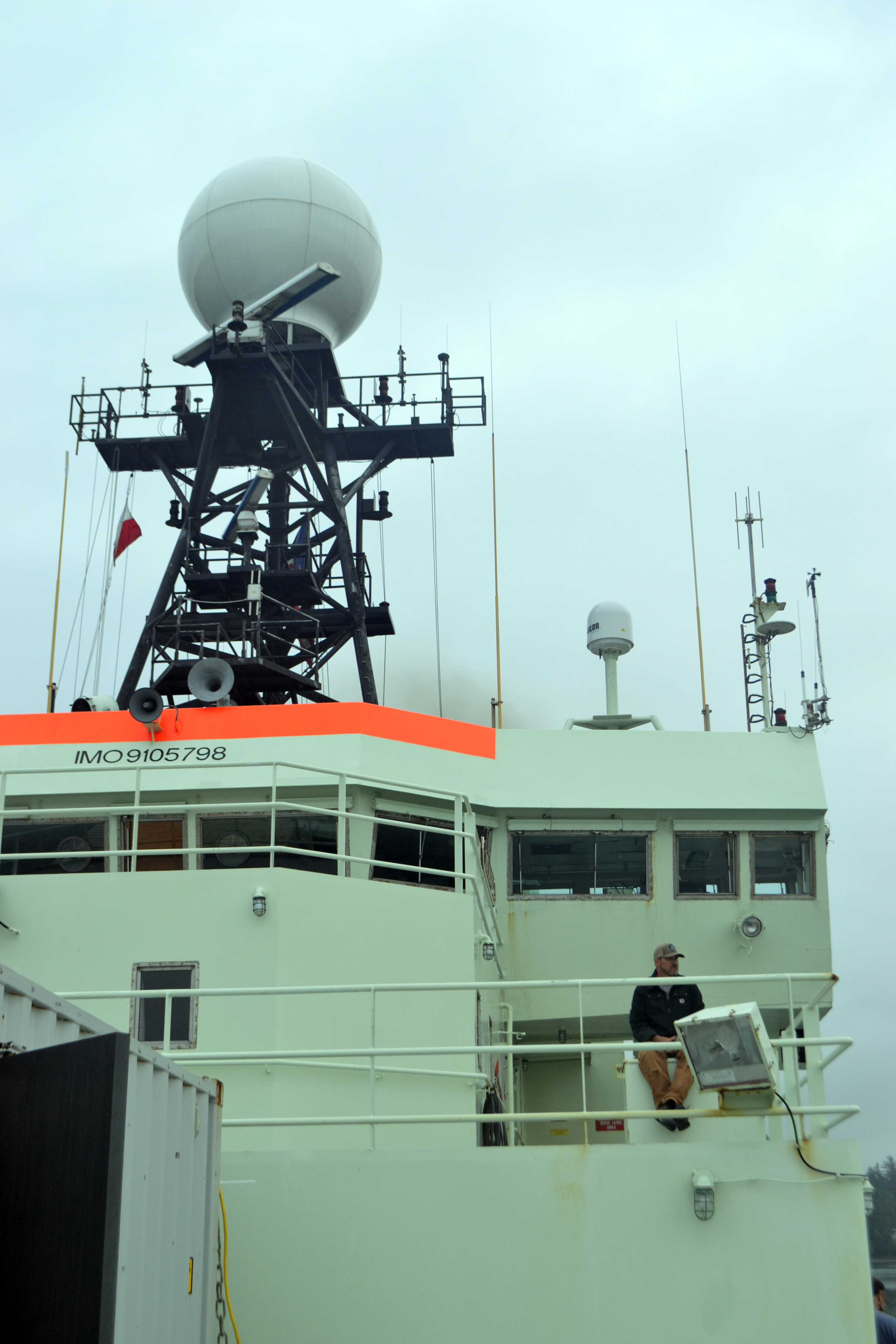Image Archive





























Microbial mats cover expansive areas of the Smokey Caverns site, which hosted exposed gas hydrate in 2017. Credit: UW/OOI-NSF/WHOI: V19.

A layer of lantern fish hovers in the shallow waters above the methane seep site at Southern Hydrate Ridge, perhaps in response to enhanced microbial activity in this zone. Credit: UW/NSF-OOI/WHOI; V19.

J1186_20190701_183208_recovery

The Deep Profiler vehicle installed since 2018 at the Oregon Offshore site is recovered onto the deck of the R/V Atlantis. Credit: M. Elend, University of Washington; V19.

Jason being brought onboard the R/V Atlantis with the Deep Profiler safely secured onto the front of the vehicle at the end of dive J2-1186. Credit: M. Elend, University of Washington; V19.

A squadron of albatross wonder what large yellow creature rises from the deep. Credit: M. Elend, University of Washington; V19.

J1186_20190701_181813_recovery

The Deep Profiler vehicle is secured in the 'Clam Shell' on the front of Jason for dive Jd-1186 at the Oregon Shelf Site. Credit: M. Elend, University of Washington; V19.

APL engineer Tim McGinnis smiles with the Deep Profiler vehicle safely secured in the "Clam Shell" in the front of the ROV Jason. Credit: M. Elend, University of Washington; V19.

J1186_20190701_121611_launch

J1186_20190701_115912_launch

The ROV Jason comes face to face with a black cod during swapping of the Deep Profiler vehicle at the Oregon Offshore Site. Credit: UW/NSF-OOI/WHOI; V19.

A swarm of black cod inspect the Deep Profiler vehicle at the Oregon Offshore Site. Credit: UW/NSF-OOI/WHOI' V19.

On deck recovering the CTD rosette. Credit: M. Elend, University of Washington;V19

The Pilot jumps aboard his boat after helping to guide the R/V Atlantis through the Newport channel. Credit: M. Elend, University of Washington, V19.

The R/V Atlantis heads out into the Pacific on Leg 4 of the Regional Cabled Array cruise. Credit: M. Elend, University of Washington, V19.

APL Lead Engineer on the VISIONS19 Cabled Array expedition gazes out into the Pacific at the start of Leg 4. Credit: M. Elend, University of Washington, V19.

The Pilot Boat heads away after dropping off the Pilot on the R/V Atlantis. Credit: M. Elend, University of Washington, V19.

Staring back at where I came from. Off to the horizon and beyond. Photo: J. Lai, University of Washington, V19

Part of the expansive engine room. Photo: J. Lai, University of Washington, V19.

PictureJune 28, 2019

: A hagfish opens its mouth and performs for the livestream audience. Credit: UW/_NSF_WHOI_V19

Southern Hydrate Ridge 3D Image. Chris William, University of Washington V19

Clouds and sky. Credit: Jacob Clairmont, University of Washington V19

The library is also a conference room but otherwise is a nice place to unwind. Photo: J. Lai, University of Washington, V19.

Getting water from the osmotic fluid sampler. Photo: E. Hudson, University of Washington, V19.

The Oregon State/Harvard benthic microbial fuel cell (CH4-BMFC) sitting on a white bacterial mat at Southern Hydrate Ridge (770m). The anode is in the sediment, and the cathode is the black "feather boa" on the vertical component. Credit: UW/NSF-OOI/WHOI, V19

The 2019 OOI digital still camera at Southern Hydrate Ridge (770m) observing a plume of methane bubbles streaming out of the seafloor. Credit: UW/NSF-OOI/WHOI, V19
- Anemone
- Animal
- Arthropod
- ASHES
- Axial
- Axial Base
- Axial Biology
- Axial Caldera
- Bacteria
- Basalt Lava
- BEP
- Biofouling
- biolgoy
- Biology
- Camds
- Camera
- Camhd
- Central Caldera
- Ciliates
- Cnidaria
- Coastal Biology
- Crab
- Deep Profiler Mooring
- Dive Highlights
- Eastern Caldera
- Echinoderms
- Endurance Array
- Engineering Team
- ENLIGHTEN 10
- Exploratorium
- Fish
- Geology
- HD Camera
- HPIES
- Hydrate Ridge
- Hydrates
- Hydrophone
- Hydrothermal Vents
- Illustration
- Inshore 80 Meters
- Instrument
- International District
- J-BOX
- Jason
- Jellyfish
- Junction Box
- K12
- Lava
- Mollusk
- Moorings
- Nodes
- Nudibranch
- Octopus
- OOI
- Oregon Offshore
- Oregon Offshore 600 m
- Oregon Shelf
- Oregon Slope Base
- People
- PN1B
- PN1D
- Polychaetes
- PPSDN
- Primary Node
- RASFL
- ROCLS
- ROPOS
- ROPOS Dives
- ROV Team
- RV Revelle
- RV Sikuliaq
- RV Thompson
- Salp
- Sample
- SC13
- Science Team
- Sea Cucumber
- Sea Star
- Sea Urchin
- Seafloor
- Seismometer
- Sensors
- Shallow Profiler Mooring
- Shark
- Shipboard
- Shore Station
- Slope Base
- Smoker
- Soft Coral
- Southern Hydrate Ridge
- Sponge
- Squid
- Students
- Students & Guest Participants
- Tmpsf
- Tubeworms
- VISIONS 11 Leg 1
- VISIONS 11 Leg 2
- VISIONS 11 Viewers
- VISIONS 13
- VISIONS 14
- VISIONS 15
- VISIONS 16
- VISIONS 17
- VISIONS 18
- VISIONS 20
- VISIONS 22
- VISIONS 23
- Visualization
